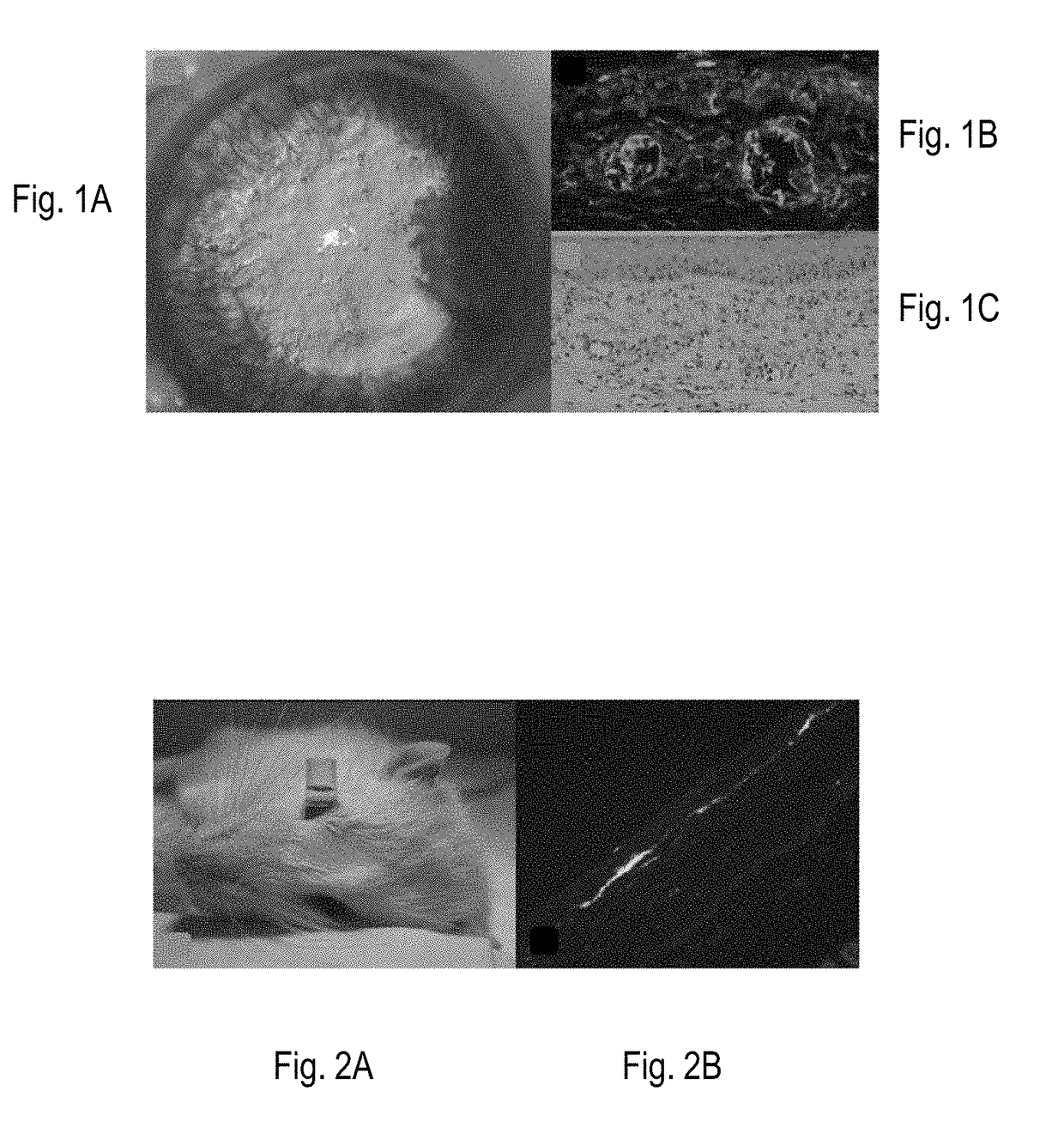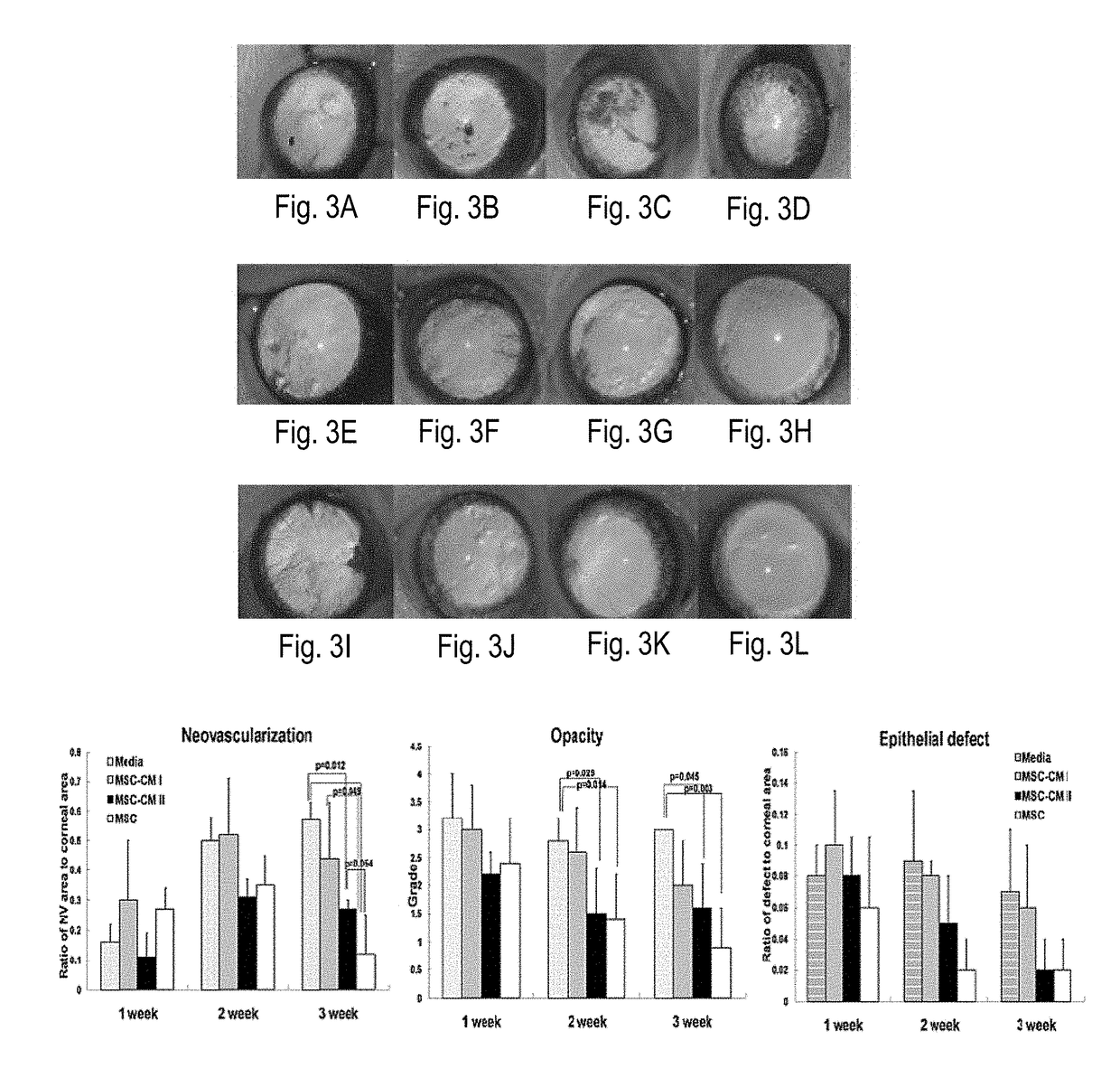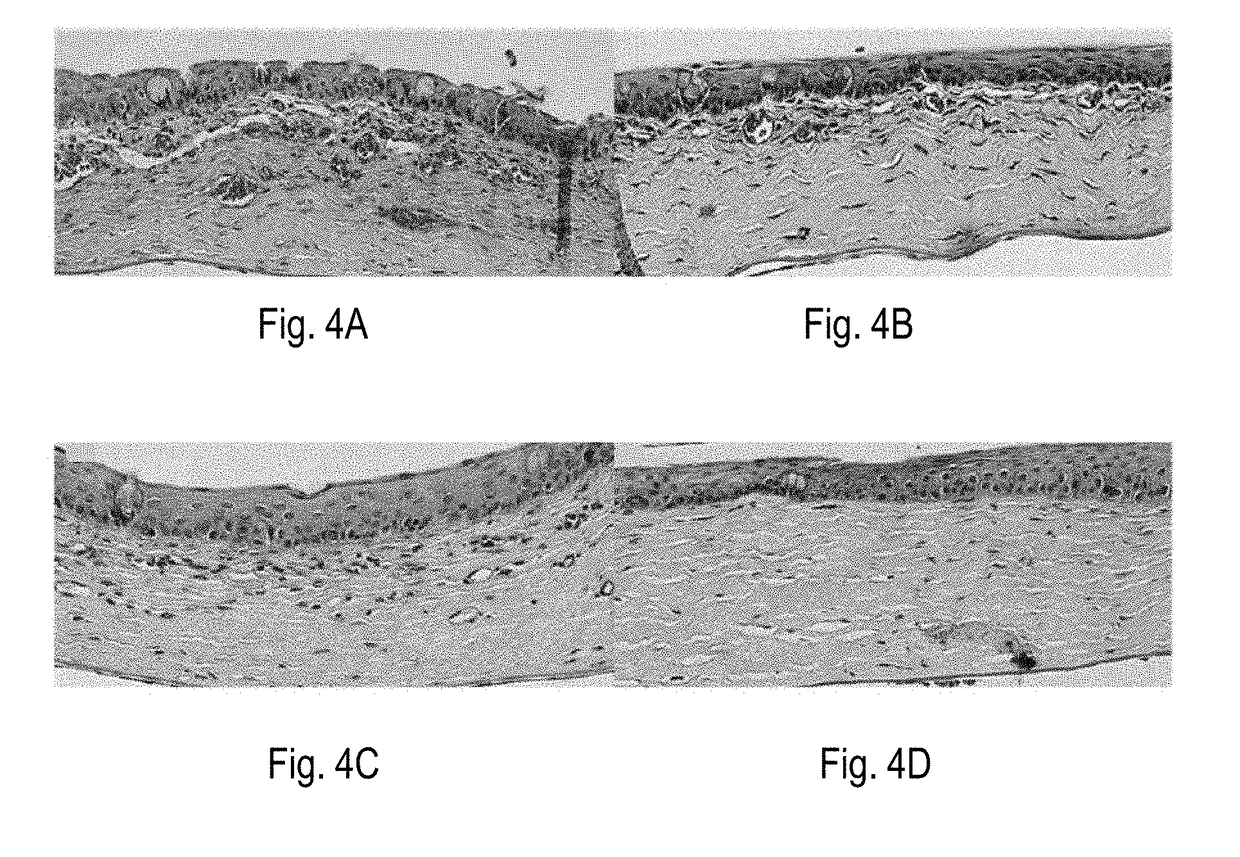Protein therapy for treatment of retinal diseases
a technology for retinal diseases and proteins, applied in the field of protein therapy for the treatment of retinal diseases, can solve the problems of limited or no benefit in therapy, increased number of dr patients, and significant morbidity in the u.s. and throughout the world, and achieve the effect of facilitating the expression of polypeptides and facilitating the transfer of fusion proteins
- Summary
- Abstract
- Description
- Claims
- Application Information
AI Technical Summary
Benefits of technology
Problems solved by technology
Method used
Image
Examples
example 1
MSC-Derived Factors Suppressed Inflammation and Neovascularization, and Promoted Wound Healing in Chemically-Injured Rat Cornea
[0230]Beneficial effects of MSCs and MSC-derived factors have been observed in suppressing corneal inflammation / neovascularization and promoting wound healing (Oh et al., 2008). Corneal inflammation, neovascularization, and delayed wound healing were induced in rats by applying 100% ethanol for 30 sec and scraping both the epithelium in the limbus and the whole cornea. The reliability and reproducibility of this model was previously confirmed and repetitively used by other researchers (Cho et al., 1998; Avila et al., 2001; Ti et al., 2002; Espana et al., 2003; Homma et al, 2004; Oh et al., 2009b). Massive infiltration of inflammatory cells and growth of new vessels in cornea were induced in this model (FIG. 1).
[0231]Immediately after injury, rat MSCs or conditioned media (CM) derived from MSC cultures were put into an applicator and allowed to remain in the ...
example 2
-Conditioned Media Rescued Human Corneal Epithelial Cells from Chemically-Induced Apoptosis
[0236]Human corneal epithelial cells (hCECs) were chemically damaged by incubation in 15% ethanol for 30 seconds. Damaged hCECs were cultured with one of the following: (1) hMSC-conditioned media, (2) conditioned media from hMSC-damaged hCECs coculture, or (3) fresh media. Then, survival of hCECs was evaluated with MTT assay. The result showed that the proportion of damaged hCECs was significantly decreased when cultured with hMSC-conditioned media (FIG. 7).
example 3
n of MMP-9 is Significantly Suppressed in Chemically-Damaged Human Corneal Epithelial Cells by hMSCs
[0237]The following experiments were performed to evaluate how MSCs affected corneal epithelial cells in terms of inflammatory and angiogenic cytokine secretion. The hCECs were chemically damaged, then they were cocultured with hMSCs for 24 hours, and finally the cell-free supernatant was analyzed for cytokine concentration by ELISA. The coculture groups were as follows: (I) hPBMCs (human peripheral blood mononuclear cells), (2) hCECs, (3) hPBMCs / hCECs, (4) hMSCs, (5) hMSCs / hPBMCs, (6) hMSCs / hCECs, and (7) hMSCs / hPBMCs / hCECs. As a result, it was observed that MSCs constitutively secreted VEGF, MMP-2, and TSP-1 (FIG. 8). It is important to note that MMP-9, which is highly secreted by damaged hCECs, was significantly suppressed by hMSCs (FIG. 8, upper right). In fact, as a consequence of hMSC suppression the level of MMP-9 was reduced from 100% to 8%. Based on these results, it was beli...
PUM
| Property | Measurement | Unit |
|---|---|---|
| Size | aaaaa | aaaaa |
| Size | aaaaa | aaaaa |
| length measurement | aaaaa | aaaaa |
Abstract
Description
Claims
Application Information
 Login to View More
Login to View More - R&D
- Intellectual Property
- Life Sciences
- Materials
- Tech Scout
- Unparalleled Data Quality
- Higher Quality Content
- 60% Fewer Hallucinations
Browse by: Latest US Patents, China's latest patents, Technical Efficacy Thesaurus, Application Domain, Technology Topic, Popular Technical Reports.
© 2025 PatSnap. All rights reserved.Legal|Privacy policy|Modern Slavery Act Transparency Statement|Sitemap|About US| Contact US: help@patsnap.com



